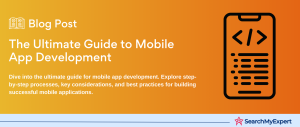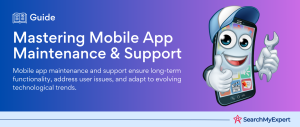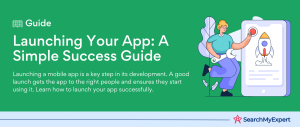In the ever-evolving landscape of mobile app development, understanding the features that can elevate an app from mediocre to exceptional is indispensable. Mobile apps are not just about creativity; they are about functionality, user experience, and continuous engagement. Let us delve into the 16 paramount features every mobile app should possess to ensure its success.
User Interface (UI) Design
Consistency in Aesthetics
A user’s first impression of an app is often influenced by its visual appeal. Ensuring a consistent color palette, typography, and design elements that mirror the brand’s essence can create a lasting impact.
Streamlined Navigation
The app’s navigation should be straightforward, allowing users to seamlessly transition from one section to another. Incorporating commonly used methods like swipe gestures or tab navigation can enhance user accessibility.
Inclusive & Accessible
Designing for inclusivity ensures everyone, including those with disabilities, can use the app effectively. Features like adjustable font sizes, high-contrast modes, and voice-over support can make an app universally accessible.
Fluid Responsive Design
In an era of diverse devices, from smartphones to tablets, an app’s design should be responsive. This ensures consistency in appearance and functionality, irrespective of the device’s screen size.
Security Measures
Advanced Data Encryption
Protection of user data is paramount. Using state-of-the-art encryption techniques, such as AES-256, safeguards the data transmitted between the app and servers, ensuring user information remains confidential.
Rigorous Authentication Processes
Implementing multi-layered authentication methods, like biometrics or OTPs, bolsters app security. Additionally, integrating role-based access can further refine which features a user can access.
Ongoing Security Evaluations
Routine security assessments and timely updates help in identifying vulnerabilities, ensuring that potential breaches are pre-empted.
Performance Enhancement
Universal Device Compatibility
An app should deliver an equally efficient experience across various devices, OS versions, and screen resolutions. This adaptability can expand the app’s user base.
Battery Consumption Efficiency
A well-optimized app uses minimal battery power. This can be achieved by reducing background activities and leveraging energy-efficient coding practices.
Swift Loading & Seamless Interactivity
The app’s loading time directly affects user retention. Techniques like data caching and the use of efficient libraries can considerably reduce load times, ensuring users remain engaged.
Comprehensive Testing Regimes
Routine testing, such as load and stress tests, can identify potential issues, assuring that the app consistently delivers a superior performance.
Engaging Push Notifications
Enhancing User Engagement
Relevant and timely push notifications can re-engage users, prompting them to revisit the app. Personalizing these notifications based on user behavior or preferences can enhance their effectiveness.
Strategies for Effective Notifications
Crafting succinct yet compelling messages, segmenting users based on their interactions, and analyzing the effectiveness of past notifications can lead to a more impactful notification strategy.
Comprehensive Analytics & Reporting
Monitoring User Interaction
Tools like Google Analytics for Mobile Apps provide insights into user behaviors, enabling developers to fine-tune app features accordingly.
Trend Recognition
Data analytics can help in recognizing emerging user trends. Such insights can guide developers in refining the app’s features or introducing new ones.
Data-Driven Decision Making
The feedback loop from analytics is invaluable. It empowers developers to make informed choices regarding feature prioritization, potential pivots, or refining marketing approaches.
The following graph displays the features of a mobile application.

Continuous Improvement and Updates
Iterative Development Cycle
In the fast-paced world of technology, an app’s life cycle is not limited to its initial launch. Continuous iterations based on user feedback, technological advancements, and changing market demands are vital for sustained success.
User Feedback Integration
Feedback from active users can provide a goldmine of insights. Actively soliciting, and more importantly, implementing this feedback can lead to a product that resonates better with its user base.
Adoption of Emerging Technologies
Staying abreast of technological advancements and integrating them can provide a competitive edge. Whether it’s the introduction of AR/VR features, blockchain technology, or leveraging AI for enhanced user experience, embracing the latest tech trends can set your app apart.
Seamless Integration with External Platforms
Social Media Connectivity
Integrating social media platforms not only facilitates easy user sign-ups but also enhances the sharing capabilities, thus increasing the app’s visibility and user base.
API Integrations
An app’s functionality can be augmented by integrating various third-party APIs, whether they are payment gateways, map services, or any other service that complements the app’s primary functions.
Cloud Integration
Incorporating cloud services ensures data consistency across devices, enhances the app’s scalability, and provides a seamless backup and restore functionality.
User Training & Support
Onboarding Tutorials
A guided onboarding experience can significantly reduce the learning curve for new users. Interactive tutorials and walkthroughs can introduce users to the app’s primary features, ensuring they derive value from their very first interaction.
24/7 Customer Support
Dedicated customer support can address any user queries, concerns, or technical glitches, ensuring a smooth user experience. Having multiple channels, like chatbots, email support, and helplines, can cater to varied user preferences.
Knowledge Base & FAQs
A comprehensive repository of commonly asked questions, video demonstrations, and troubleshooting guides can empower users to resolve minor issues independently.
Monetization Strategies
In-app Purchases
Offering additional premium features or content through in-app purchases can serve as a steady revenue stream while enhancing the app’s functionality for those willing to pay.
Ad Integrations
Displaying non-intrusive ads can generate revenue without hampering the user experience. Collaborating with relevant brands or services for targeted ads can also enhance their effectiveness.
Subscription Models
Introducing a subscription model can provide users with exclusive content or features, ensuring recurring revenue while offering users value for their money.
Post-launch Strategies
User Retention Tactics
It’s widely recognized that retaining existing users is often more cost-effective than acquiring new ones. Implementing features like loyalty programs, rewards for referrals, and personalized content can increase user engagement and reduce churn rates.
Regular App Updates
Providing frequent updates not only enhances the app’s security and functionality but also communicates to users that the product is being actively managed and improved upon. Each update should be accompanied by clear release notes detailing the changes made.
Marketing and Promotion
An app’s success isn’t solely reliant on its features, but also on its visibility in the marketplace. Utilizing Search Engine Optimization (SEO) techniques for the app’s store listing, creating promotional campaigns, and garnering genuine user reviews can significantly enhance its discoverability.
Feedback Loop
Establishing a two-way communication channel where users can report bugs, suggest features, or express concerns can make them feel valued. By acting on this feedback, developers can demonstrate commitment to user satisfaction.
Growth Strategies
Localization
If an app has a global target audience, it’s crucial to adapt its content to various regions and languages. Localization goes beyond mere translation, taking into account cultural nuances, and regional preferences to make the app truly resonate with a global audience.
Partnerships and Collaborations
Forming alliances with other apps or services can enhance the app’s functionality and user base. For instance, a fitness app could partner with a nutrition tracker to provide an all-encompassing health solution.
Expansion to Other Platforms
If the app is exclusive to one platform, such as iOS, considering its expansion to Android or web-based versions can significantly increase its reach.
Community Building
User Forums and Discussions
Creating a space where users can interact with each other, share tips, and discuss features can foster a sense of community. This not only aids in user retention but can also provide invaluable insights for future developments.
Hosting Events or Webinars
For apps that serve specific niches, hosting events or webinars related to the app’s domain can enhance user engagement and establish the brand as an industry thought leader.
Engaging in CSR Activities
Showing a commitment to Corporate Social Responsibility (CSR) by integrating charitable features or promoting sustainability can positively influence the brand image and user loyalty.
Conclusion
In conclusion, the journey of an app doesn’t end post its launch. Continual enhancement, attentive user engagement, and proactive growth strategies are pivotal for its sustained success in an increasingly competitive market. As the realm of app development continues to innovate, staying attuned to users’ evolving needs and market trends remains the cornerstone of a flourishing mobile application.
Push the Limits with the most innovative Mobile App Developers.
Table of Contents
Toggle






